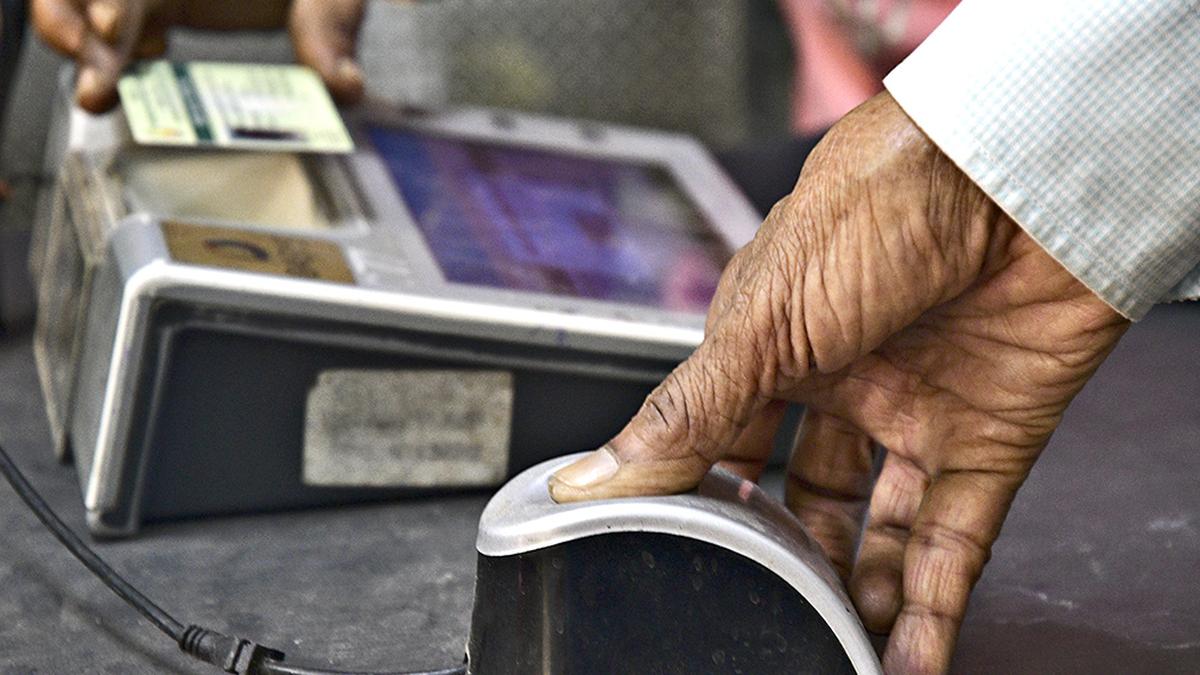
Copyright infringement not intended
Picture Courtesy: The Indian Express
Context: In a significant development for Indian agriculture, Prime Minister recently inaugurated ‘Urea Gold’ fertiliser, a new product from Rashtriya Chemicals and Fertilizers Ltd (RCF), a public sector enterprise. Urea Gold is a unique fertiliser that combines nitrogen (N) and sulphur (S) in a single granule, offering multiple benefits to farmers and crops.
Details
Why is Urea Gold different from normal urea?
- Normal urea is the most widely used fertiliser in India, as it provides 46% of N, an essential nutrient for plant growth. However, normal urea has some drawbacks, such as low nitrogen use efficiency (NUE), high leaching losses, and susceptibility to volatilisation. Moreover, normal urea does not supply any other nutrient apart from N, whereas many Indian soils are deficient in S, which is especially important for oilseeds and pulses.
- Urea Gold addresses these issues by fortifying urea with S. Urea Gold contains 37% N and 17% S, which are coated over each other in a granule. This coating ensures a slow and steady release of N, which matches the crop demand and reduces losses. By delivering both N and S in one fertiliser, Urea Gold also saves farmers the cost and hassle of buying and applying separate sources of S.
How does Urea Gold benefit farmers and crops?
- Higher NUE: Urea Gold improves the NUE of urea by 10-15%, which means that farmers can get the same yield with less fertiliser. This saves them money and also reduces the environmental impact of excess N application.
- Longer greenness: Urea Gold prolongs the greenness of the crop by providing a sustained supply of N. This enhances the photosynthesis and biomass production of the crop. Farmers can also reduce the number of urea applications, as they do not have to apply more urea when they see yellowing of leaves.
- Better quality: Urea Gold improves the quality of the crop by providing adequate S, which is essential for protein synthesis, oil content, and stress tolerance. Crops like oilseeds and pulses need more S than cereals, and Urea Gold can meet their requirement without compromising on N.
- Higher-income: Urea Gold can increase the income of farmers by increasing the yield and quality of the crop while reducing the fertiliser cost and application frequency. RCF claims that Urea Gold can increase the net profit of farmers by Rs 5,000-10,000 per hectare.
When will Urea Gold be available in the market?
- The price of Urea Gold has not been announced yet, but it is expected to be higher than ordinary urea. However, Urea Gold will be more cost-effective for farmers in the long run, as they will need less quantity and frequency of application. The company also hopes that Urea Gold will be included in the government's subsidy scheme for fertilisers.

How to make urea more efficient as a fertilizer
- Urea, a nitrogen-rich compound, has been a cornerstone of modern agriculture, boosting crop yields and ensuring food security for billions of people globally. Its high nitrogen content fuels robust plant growth, making it an essential element in the quest to meet the demands of a growing population. However, over time, concerns have arisen regarding the efficiency of urea as a fertilizer, prompting the need for more sustainable practices.
- Urea has a significant impact on the environment and the economy. On one hand, urea helps increase crop yields and improves soil fertility. On the other hand, urea also contributes to greenhouse gas emissions, water pollution and soil degradation.
- Urea is a major source of nitrous oxide (N2O), a potent greenhouse gas that has 298 times the global warming potential of carbon dioxide (CO2). Urea also causes nitrate leaching and runoff, which can contaminate groundwater and surface water sources. Excessive use of urea can also reduce soil organic matter, increase soil acidity and salinity, and affect soil biodiversity.
- The production of urea is also energy-intensive and costly. The Haber-Bosch process requires high temperature and pressure, which consume large amounts of natural gas or coal. The cost of urea production depends on the price of these feedstocks, which are subject to fluctuations in the global market. Moreover, the government of India subsidizes urea to make it affordable for farmers, which imposes a huge fiscal burden on the exchequer.
Steps taken to make urea more efficient as a fertilizer
Introducing neem-coated urea
- Neem-coated urea is a type of urea that is coated with neem oil or neem cake. Neem-coated urea reduces nitrogen losses due to volatilization, leaching and denitrification. It also improves nitrogen use efficiency, crop quality and pest resistance. The government made it mandatory for all domestic urea producers to produce 100% neem-coated urea in 2015.
Promoting balanced use of fertilizers
- Balanced use of fertilizers means applying fertilizers in the right proportion according to the soil type, crop requirement and nutrient availability. Balanced use of fertilizers can enhance crop productivity, soil health and nutrient use efficiency. The government has launched various schemes to promote the balanced use of fertilizers, such as soil health card schemes, custom hiring centres for farm machinery and equipment, direct benefit transfer for fertilizer subsidy etc.
Encouraging organic farming
- Organic farming is a system of farming that relies on natural inputs such as compost, vermicompost, biofertilizers etc., instead of synthetic fertilizers and pesticides. Organic farming can improve soil fertility, biodiversity and environmental quality. It can also reduce dependence on imported fertilizers and save foreign exchange. The government has launched various schemes to encourage organic farming, such as Paramparagat Krishi Vikas Yojana (PKVY), Mission Organic Value Chain Development for North Eastern Region (MOVCDNER), National Programme for Organic Production (NPOP) etc.
Challenges that hinder the efficiency and sustainability of urea as a fertilizer
Lack of awareness among farmers
- Many farmers are not aware of the benefits of neem-coated urea, balanced use of fertilizers and organic farming. They tend to overuse or misuse urea due to its low price and easy availability. They also lack access to soil testing facilities, extension services and quality inputs. There is a need to create more awareness among farmers through mass media, farmer field schools, demonstration plots etc.
Inadequate infrastructure and logistics
- The distribution of urea in India faces several bottlenecks such as inadequate storage capacity, transportation delays, pilferage and diversion. There is a need to improve the infrastructure and logistics of the urea supply chain, such as increasing the number of warehouses, rail wagons, trucks etc. There is also a need to ensure timely delivery of urea to the farmers, especially during the peak season.
High import dependence
- India still depends on imports to meet its urea requirement, which exposes it to the volatility of the international market. The global fertilizer market is facing a crisis due to the rising prices of natural gas and coal, the disruption of supply chains due to the Covid-19 pandemic, and the geopolitical tensions in some of the major exporting countries. There is a need to reduce India's import dependence by increasing its domestic production capacity, diversifying its sources of imports and exploring alternative sources of nitrogen such as biofertilizers.
Way Forward
Developing new types of urea
- There is a scope for developing new types of urea that can enhance its efficiency and sustainability. For example, nano-urea is a type of urea that is produced by encapsulating urea molecules in nanosized particles. Nano-urea can increase nitrogen use efficiency by 80%, reduce nitrogen losses by 70% and increase crop yields by 8%. Similarly, slow-release urea is a type of urea that releases nitrogen gradually over time, which can reduce nitrogen losses and improve crop performance.
Reforming the subsidy regime
- The current subsidy regime for urea is inefficient and unsustainable. It distorts the fertilizer market, encourages the overuse of urea, increases the fiscal deficit and creates environmental problems. There is a need to reform the subsidy regime by rationalizing the subsidy rates, decontrolling the urea price, targeting the subsidy to small and marginal farmers, and linking the subsidy to soil health and nutrient use efficiency.
Changing the consumption pattern
- The consumption pattern of urea in India is skewed and imbalanced. Urea accounts for 80% of nitrogenous fertilizer consumption, while phosphate and potash account for only 10% each. This leads to an imbalance in the soil nutrient status, which affects crop productivity and quality. There is a need to change the consumption pattern of urea by promoting integrated nutrient management, crop diversification and precision farming.

Conclusion
- Urea is a vital fertilizer for India's agriculture sector. However, it also poses some challenges to its efficiency and sustainability. India has taken some steps to address these challenges, but there is still room for improvement. India needs to adopt a holistic approach that involves technological innovation, policy reform and behavioural change to make urea more efficient as a fertilizer.
Must-Read Articles:
UREA UNDER NBS REGIME: https://www.iasgyan.in/daily-current-affairs/urea-under-nbs-regime
NANO UREA: https://www.iasgyan.in/daily-current-affairs/nano-urea-6
UREA GOLD: https://www.iasgyan.in/daily-current-affairs/urea-gold
|
PRACTICE QUESTION
Q. How can the regulation of fertilizer subsidies be optimized to strike a balance between supporting farmers and enhancing agricultural productivity, while mitigating the negative environmental and budgetary consequences? What are the key advantages and obstacles associated with such regulation, and what strategies can be employed to ensure its effective and efficient implementation?
|
https://indianexpress.com/article/explained/explained-economics/how-to-make-urea-more-efficient-as-a-fertiliser-and-why-thats-needed-8891183/
Array
(
[0] => daily-current-affairs/how-to-make-urea-more-efficient-as-a-fertilizer
[1] => how-to-make-urea-more-efficient-as-a-fertilizer
)








